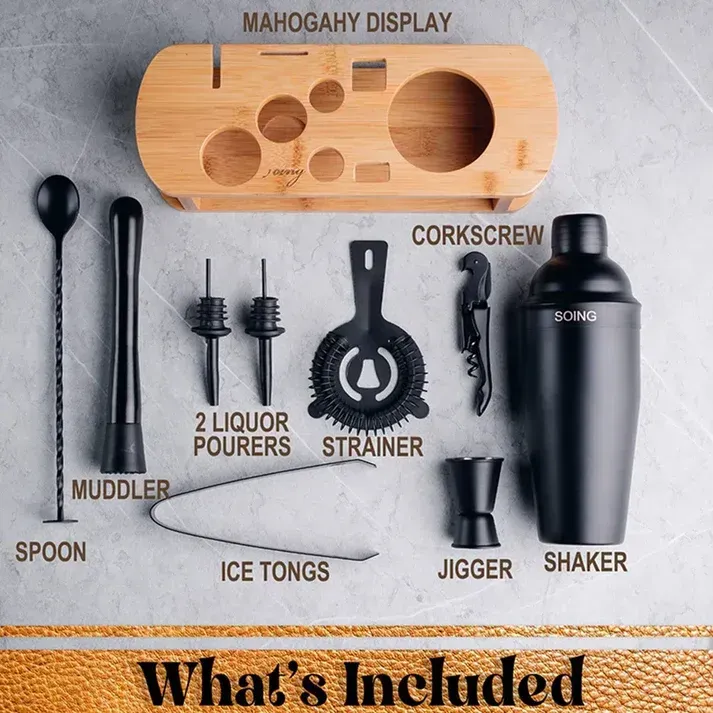
Understanding Bitters: A Cocktail Maker’s Guide
Introduction
Ever wondered what gives a cocktail that magical touch? It might just be bitters—the unsung heroes of mixology. Bitters are more than just a mysterious bottle on a bar shelf; they're the flavor enhancers that elevate a good drink to greatness.
In this guide, we’ll dive into the world of bitters, exploring their origins, types, and how to use them effectively in your cocktails. By the end, you’ll be mixing drinks like a pro with the confidence of a seasoned bartender.
1. What Are Bitters?
Definition of Bitters
Concentrated flavoring agents made by infusing botanicals like roots, herbs, and spices in alcohol.
Known for their intense, aromatic flavors used to balance sweetness or add complexity to drinks.
The Role of Bitters in Cocktails
Act as the “seasoning” of cocktails, much like salt does in cooking.
Enhance the overall flavor profile, creating harmony among ingredients.
Popular Types of Bitters
Aromatic bitters: Classic choice for Old Fashioneds and Manhattans.
Orange bitters: Perfect for martinis and light, citrusy cocktails.
Specialty bitters: Think chocolate, lavender, or cardamom for creative twists.
price:$65.39 USD
Complete Bartending Set: Ideal for beginners and pros, this kit includes everything needed to create bar-quality cocktails at home.
Durable & Stylish: Crafted from premium 304 stainless steel, it’s rust-resistant, long-lasting, and visually stunning.
2. The History of Bitters
Early Beginnings
Originated as medicinal tonics in ancient times, used to aid digestion.
Popularized during the 19th century as an essential ingredient in cocktails.
Prohibition Era
Bitters survived the alcohol ban by being marketed as medicine.
Bartenders began experimenting with bitters to create new drink recipes.
Modern Resurgence
Today, bitters are experiencing a revival, with craft producers offering endless varieties.
Mixologists and home bartenders alike are embracing bitters as a creative tool.
3. Types of Bitters and Their Uses
Flavor Profile: Spicy, herbal, slightly bitter.
Common Uses: Old Fashioneds, Manhattans, and whiskey-based drinks.
Pro Tip: Add a dash to soups or stews for a savory twist!
Citrus Bitters
Flavor Profile: Bright, zesty, refreshing.
Common Uses: Gin and tonics, martinis, and tequila-based cocktails.
Pro Tip: Use them to elevate iced tea or lemonade.
Flavor Profile: Bold, earthy, complex.
Common Uses: Tiki drinks, hot toddies, and craft cocktails.
Pro Tip: Experiment with unique flavors like celery or cardamom bitters.
Flavor Profile: Sweet, tangy, fruity.
Common Uses: Rum cocktails, spritzers, and dessert drinks.
Pro Tip: A few dashes can brighten up your baking!
price:$119
Self-paced. Lifetime access to 6+ hours of course content to watch at your convenience.
Learn from the best. Our team of experts includes industry leaders who deeply understand the science of mixology.
4. How to Use Bitters in Cocktails
Start Small
Bitters are potent; a little goes a long way. Begin with one or two dashes and adjust to taste.
Experiment with Pairings
Match the flavor profile of your bitters to the base spirit. For example, aromatic bitters work well with whiskey, while citrus bitters shine in gin-based drinks.
Layering Flavors
Don’t be afraid to mix multiple types of bitters in a single cocktail for added complexity.
Not Just for Cocktails
Use bitters in soda water for a refreshing, non-alcoholic drink.
Add a few dashes to coffee or desserts for unique flavor notes
5. Building a Bitters Collection
Must-Have Basics
Orange bitters.
Expanding Your Options
Explore specialty brands for flavors like chocolate, lavender, or mole.
Storage Tips
Keep bitters in a cool, dark place to maintain their potency.
6. DIY Bitters: Making Your Own
Ingredients
High-proof alcohol as a base.
Botanicals such as citrus peels, cloves, and gentian root.
Process
Combine ingredients in a jar and let them steep for 2-4 weeks.
Strain and bottle the mixture, ensuring no residue remains.
Test and adjust flavors for your desired intensity.
Why Go DIY?
Create personalized blends tailored to your favorite cocktails.
Experiment with unique ingredients not available in store-bought bitters.
Conclusion
Bitters may seem small and unassuming, but their impact on a cocktail is anything but. By understanding their history, types, and uses, you can elevate your mixology game to new heights. Whether you’re adding a dash to an Old Fashioned or experimenting with homemade blends, bitters are your secret weapon for crafting unforgettable drinks.
Call to Action: What’s your favorite way to use bitters? Share your recipes or tips in the comments below and let’s keep the conversation going!

Affiliate Disclosure
We may earn a commission when you purchase through our links. This helps support our research and testing while maintaining editorial independence. Our recommendations are always based on product quality and performance.
Note: Prices indicated reflect current market conditions but may vary by region and retailer. Purchase from authorized dealers to ensure warranty coverage and product authenticity.

